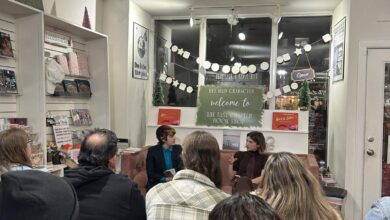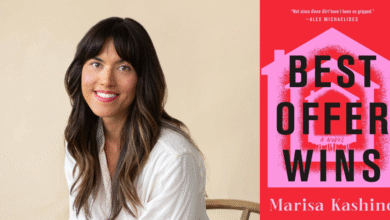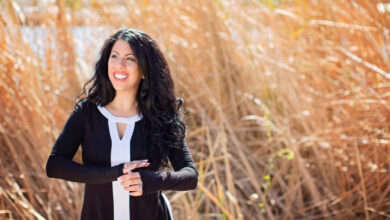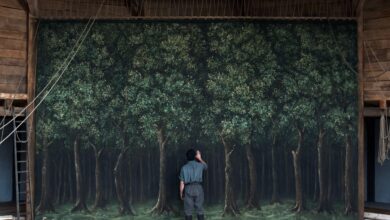Indies Introduce Q&A with Stephanie Wambugu
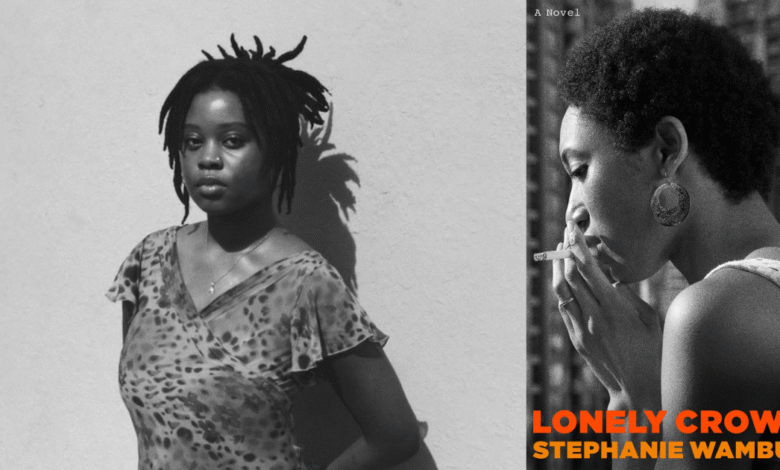
Stephanie Wambugu is the author of Lonely Crowds, a Summer/Fall 2025 Indies Introduce adult selection.
Nadi Hinojosa of Lark and Owl Booksellers in Georgetown, Texas, served on the panel that selected Wambugu’s book for Indies Introduce.
“Lonely Crowds has cemented its way into my top favorite books. I would have gladly stumbled through New York with Ruth for another hundred pages if I could. I didn’t want to let her go,” Hinojosa said of the title.
“Lonely Crowds follows young Ruth all the way from elementary school well into her mid-thirties. Her life begins with a timid father, a no-nonsense mother, and Catholic school. Her family quickly takes in a young girl, Maria, a girl in Ruth’s class that she begins to obsess over. A tense relationship quickly coils Ruth and Maria together, one that laces so tight in Ruth’s mind that everything else in her life must take a back seat to leave room for Maria. In this book, jealousy, obsession, love, and hate unfold together, laying out doomed lives and broken hearts. I can’t recommend this book enough.”
Wambugu sat down with Hinojosa to discuss her debut title. This is a transcript of their discussion. You can listen to the interview on the ABA podcast, BookED.
Nadi Hinojosa: My name is Nadi Hinojosa. I am a bookseller from Lark and Owl Booksellers in Georgetown, Texas. Today I’m here with Stephanie Wambugu to talk about her new novel Lonely Crowds. I’m very excited to do so.
Stephanie was born in Mombasa, Kenya, in 1998 and grew up in Rhode Island. She lives and works in New York, where she received her MFA from Columbia University. She is an editor of Joyland Magazine, and Lonely Crowds is her first novel. Lonely Crowds is Luster meets The Vanishing Half and a riveting debut novel about a volatile friendship between two outsiders who escaped their bleak childhood and enter the glamorous early ‘90s art world in New York City. However, only one of them can make it.
Stephanie, how are you doing today?
Stephanie Wambugu: I’m good, how are you? It’s so great to talk to you.
NH: No, me too. You’ve probably heard this so many times already, but this book is amazing.
SW: Thank you, thank you so much.
NH: One of the best I’ve read all year. I read it back in February, and that still rings very true today. Both of your main characters build careers as artists, and they both use art as their escape route away from painful upbringings. I’m wondering what your relationship to art is, and at what point in your life did you turn to art and decide to make a career out of it?
SW: I studied writing at Bard [College], and I knew that I wanted to be a writer. I studied poetry initially, and then I started writing fiction. The first time I wrote a substantial, longer piece of fiction was the novella I wrote for my thesis at Bard. But I feel like it was a natural progression because, as a child, I always liked to write. I was lucky enough that my parents put me in a lot of art extracurriculars; I took painting lessons, I went to art classes, and I always wrote, and they always really encouraged that.
Like many people, I didn’t realize that writing or even being an artist was a viable career. It’s something that the women in the book deal with as well, they’re not sure if you can actually make a living and support yourself as an artist, and so I had a bit of that. But for whatever reason, I felt a strong feeling of conviction about this being what I wanted to devote my life to and it feels like it’s been the through line from the time that I was like a child to now in my mid-to-late 20s.
NH: That’s awesome that you had such support from a young age. I know that’s one of the big things with the characters in the book, is that they don’t have that same support. It’s good to hear that you did, and I’m glad because we got this amazing novel. Keeping on the topic of art, I was wondering if there was any artwork — that’s not literature or a novel — that feels similar to the story or compliments Lonely Crowds?
SW: There’s a painter, Cecily Brown, who painted this work called BFF — I love her paintings. It’s kind of abstract backgrounds, but there’s some figures within the paintings, so [it’s] maybe similar to the style of painting that someone like Ruth is doing (although her painting isn’t described a great deal in the novel). The reason why BFF feels significant to me is because when this painting was in her show at MoMA, [the plaque] said, “If you make painting your best friend, you’ll never be alone.”
It’s so moving when I think about that now, because it feels like there’re these twin searches in the women’s lives in the book. They’re searching for love and companionship as much as they’re searching for a real vocation and a real relationship to their art. If you make your vocation as an artist your best friend or you find companionship in it, it’s always there for you and it can always be a repository or vessel for the things that you’re going through. So that painting in particular feels like it has a relationship to the book to me, in the context around the painting.
NH: That makes a lot of sense. I know Ruth, in the book, finds her love for art really early on and she holds it close to her. That makes sense that you had that idea of keeping [your art] as your best friend, especially because Ruth struggled growing up finding someone. And also — [gestures to a photo of Brown’s BFF].
SW: Yeah, it’s beautiful.
NH: It’s beautiful!
SW: I love her paintings.
NH: Listener, Cecily Brown’s BFF, check it out. It complements the book really well. Self-discovery is a big theme throughout your book, and when I was looking back through my annotations, I ran into this line, “…I tried to arrive at ways to describe myself, but I could go no further than the pronoun I. I am. I am.”
What was the process like for writing a character who so often felt unsure of herself, especially when she compared herself to everyone around her?
SW: It felt generative to me because she could try on all of these different identities, and she could be a container for the people around her. I remember talking with a friend about this book, and he described it as a first person [point-of-view] that can shift into feeling more like third person [point-of-view] because she gets so swept up in other people’s interiority or inhabiting another person’s perspective.
That’s part of Ruth’s directionless-ness, [which] was helpful in trying to write a coming-of-age novel, because she is able to emulate her mother, be curious about her, do the same thing to her father, do the same thing to Maria. Throughout the novel, she’s trying to use other people as a yardstick to measure and understand herself, so it allowed me to get very invested in the characters, even the more minor ones, because she does present as like a blank slate at times or sees herself that way.
NH: That makes sense. I like that you brought up her parents. What I really liked was [that] her mom and dad weren’t really too much of a focus throughout the story, but they felt very real and fleshed out. She had a volatile relationship with her parents, but I felt so much for them, you could really tell that they were stuck in survival mode.
SW: I’m glad to hear that.
NH: They felt incredibly real. I was thinking about a conversation that she had with her father at some point where her dad is just like “You weren’t asked to be born, and also nothing else is going to get better from here.” Whenever I was looking back through the book, I realized that that’s something that Ruth mentions on page one, so I’m glad that I was able to go back and tie that in. That makes sense that she’s an empty slate, because she didn’t get filled with wealth from her parents because they were stuck in that state of survival.
SW: Yeah, that’s an interesting reading!
NH: I asked this question specifically because, I don’t know how great it is to say that I identified with this character so much, but I think people who enjoy the literary sad girl stories of someone in their 20s trying to figure themselves out [are] going to see themselves a lot in this book. I’m really excited for readers to jump into this.
SW: No, I’m honored to hear you so that you identify with it! I think that’s a huge compliment to get as an author, so thank you, especially my first time around.
NH: I don’t know how you encapsulated so much in this novel. By the time I finished it, I was like, “I would like 100 more pages.” I would follow Ruth around for the rest of her life through New York until she figures it out.
I’ve already seen a lot of praise for your prose from early readers. How I’ve been describing your book so far is [that] it’s lyrical, melancholy, and very Baldwin-esque. I don’t know if you’ve heard that yet.
SW: No, I haven’t! That’s such a big compliment. I’m not even sure if I can accept that… [James Baldwin is] such an idol to me and to many people.
NH: I would definitely handsell this alongside Giovanni’s Room.
SW: I love Giovanni’s Room. I read that in high school and it completely changed my life. It’s so fantastic. Honestly, I’m due for a reread so it’s good that you brought it up, I should reread it.
NH: Me too. We have a coffee here at the coffee shop at the bookstore called “Giovanni’s Room” that I named. It’s a lavender vanilla espresso latte. I love that book so much. Anyways, what authors have inspired your writing?
SW: Certainly James Baldwin. Giovanni’s Room, for many reasons — for its subject matter, for its economy as a book, that such a short book can accomplish as much as it did. I’m really inspired by Gary Indiana as well; he was an art critic and a novelist. I love his novel Horse Crazy. I think that’s a very good place to start, it’s also his first book. I love reading first novels because I’m in the same boat, and it’s interesting to see how a person’s work develops over the course of their life and their time writing.
I really love Toni Morrison, of course, and I’m really inspired by Jean Rhys as well. I was just talking with a friend last night about Good Morning, Midnight, and the beautiful opening of that novel which is, she walks into a hotel room, and the first line is “‘Quite like old times,’ the room says.” She’s able to animate places and inanimate objects. She’s such a witty and also incredibly moving writer. She manages to do something that I’m really interested in doing, which is having humor and levity but also having something that feels like it can have a lot of pathos. It’s not totally ironic, but it’s able to balance both registers of humor and sadness or melancholic.
I’m looking at my bookshelf. I have a lot of the writers that influence me here on my mantle because I always come back to them. I really love Akhil Sharma’s Family Life. I think he’s the only living writer I’ve named because sadly all the other ones are dead. But I love Family Life, I think that’s a fantastic book.
There are too many people to credit and to thank. If this book ever is reprinted, I would love to change the acknowledgements and add a list of all the writers who have influenced me because I feel so indebted to so many writers.
NH: That would be beautiful. Yeah, your epigraph has a Kafka quote so that makes sense.
SW: Yeah, Kafka as well!
NH: A lot of the authors you’re speaking about are not too popular. Besides Tony Morrison, there’s no one that I recognize, so I’m excited to read all these now and to look through their work, especially if it’s anything similar to what you have written. I’m such a fan.
SW: Thank you so much, I’m so appreciative. It’s so kind of you. It’s a great way to start the week.
NH: Another theme throughout the book is obsession, which is one of my favorite things to read in novels. I love whenever a character just spirals and spirals and spirals. That’s my favorite. On the first page, Ruth shares, “When I met Maria, I learned that without an obsession, life was impossible to live.”
I underlined that the first time I went through and read it. I’m wondering, is that only Ruth’s thoughts? Is that something that you agree with? And if so, how do you think one should toe the line between a healthy and an unhealthy obsession, if one exists?
SW: I’m sort of reluctant to say whether that’s life advice, because I don’t want to give people advice as to how to live. But it’s coming from Ruth and I hope that it makes sense, why that aligns with her personality and her way of being. I’ll start by saying that I think the connotation [of obsession] is that it is unhealthy; [Ruth] goes on to explain [that it’s] something that comes at the expense of everything else. I don’t think that you necessarily need that, but I will say I feel that that’s akin to my relationship to writing, and the relationship that most artists have to their work. It is the priority, it’s the framework through which you see the world. I don’t think I can go a single day without talking about the books I’m reading or what I’m writing. It spills into every part of my life.
I think that [obsession] can be a person and it’s wonderful if it’s a person and it’s reciprocal — oftentimes it’s not and maybe those things are unrequited. Going back to Cecily Brown’s BFF, I think having this relationship to your work that comes at the expense of everything else — maybe not to an unhealthy degree — has been really edifying for me. I hope that it’s a constant throughout my life.
How to distinguish between an unhealthy and healthy obsession? I guess it’s a question of reciprocation; with the one-sidedness, it’s so easy to spiral and you’re left alone with this fixation. The relationship I have to writing is that I’m obsessed with it and I love it, but it’s also yielded good things for me. I don’t think it’s been a destructive thing in my life — although that’s a really romantic idea that some artists have about their work, that “it’s ruined my life and driven me crazy” and et cetera, et cetera.
NH: Well, we’re lucky that it ended up well for you, but I like how you said it depends on if it’s reciprocated or not. That’s an interesting way to think about it, especially with this book. I want so badly to talk about the ending of the book but I don’t want to [share] any spoilers.
SW: We can email at a certain point if you want, off the record.
NH: Once I finished the last chapter, I sat there thinking that I understood what happened and what came of Ruth’s obsession. There are points in the story where you can say it was reciprocated, and then it wasn’t, it was, and then it wasn’t. When I finished it, I thought I knew exactly what happened, and then I sat with it for a few days, and I was like, “Wait a minute, did I completely read it wrong?” So, I’m excited for readers.
SW: Yeah, I want there to be ambiguity throughout the book because relationships are so ambiguous. When you get to the end of a relationship, it’s only then when you can begin to narrativize and think about what even happened. Throughout [the relationship] you’re not seeing with objectivity, it’s highly subjective.
NH: I forgot halfway through that [this novel] was a recounting of a story, it wasn’t something that was happening in real time. By the time I got to the end, I had completely forgotten that this started because she was at a birthday party and a friend wasn’t there. You tied everything around really well.
Thank you so much for your time today, Stephanie!
SW: Is that it? That flew right by, that was great!
NH: Yeah, it flew right by — good for us! If you’re a bookseller, and you are in need of who to sell this to, sell this to the person who read Aria Aber’s Good Girl. That was also one of my favorites and these two sit together on my shelf. This book is going to do great, and honestly, booksellers, you probably won’t even need to try to sell it very hard because I think it’s just going to fly off the shelf. I’m so excited to have spoken to you today, Stephanie.
SW: Thank you, likewise, this was such a pleasure! It was so great to meet you. Thank you for reading the book so closely also, I appreciate it so much.
NH: Of course!
Lonely Crowds by Stephanie Wambugu (Little, Brown, 9780316581332, Hardcover, Fiction, $28, On Sale: 7/29/2025)
Source link

